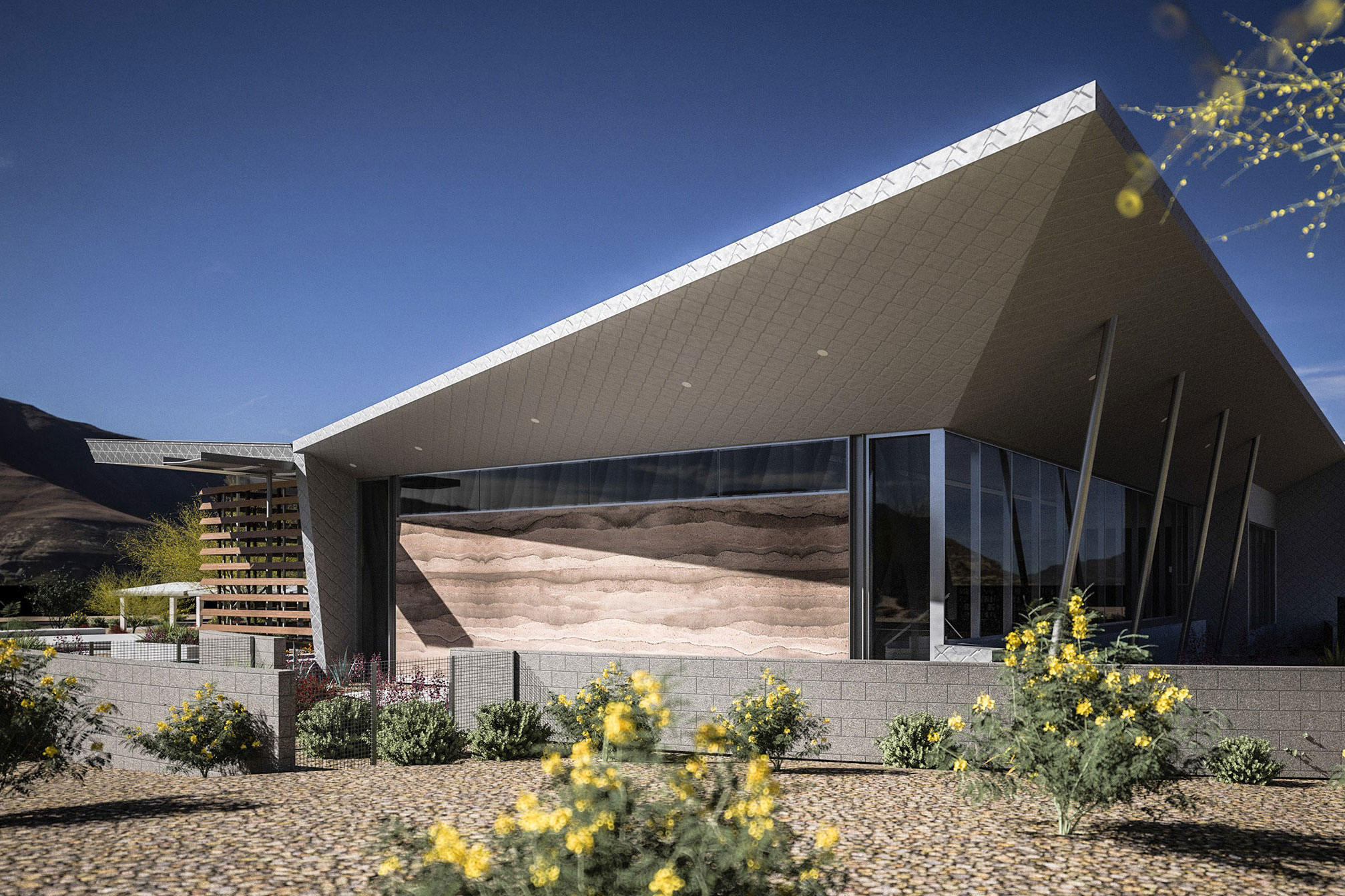Story at a glance:
- Biomimicry is an approach to design that seeks to emulate biological processes.
- The practice learns from and mimics the strategies found in nature to solve human design challenges.
In a world increasingly turning toward bio-inspired design, biomimicry stands out as a holistic, regenerative approach toward problem-solving. Biomimicry not only respects nature as a teacher but also recognizes Earth’s natural biological processes as the highly refined, efficient systems that they are.
In this article we’ll explore the basics of biomimicry, including its importance and barriers to widespread adoption, as well as take a look at a few real-world applications.
What is Biomimicry?
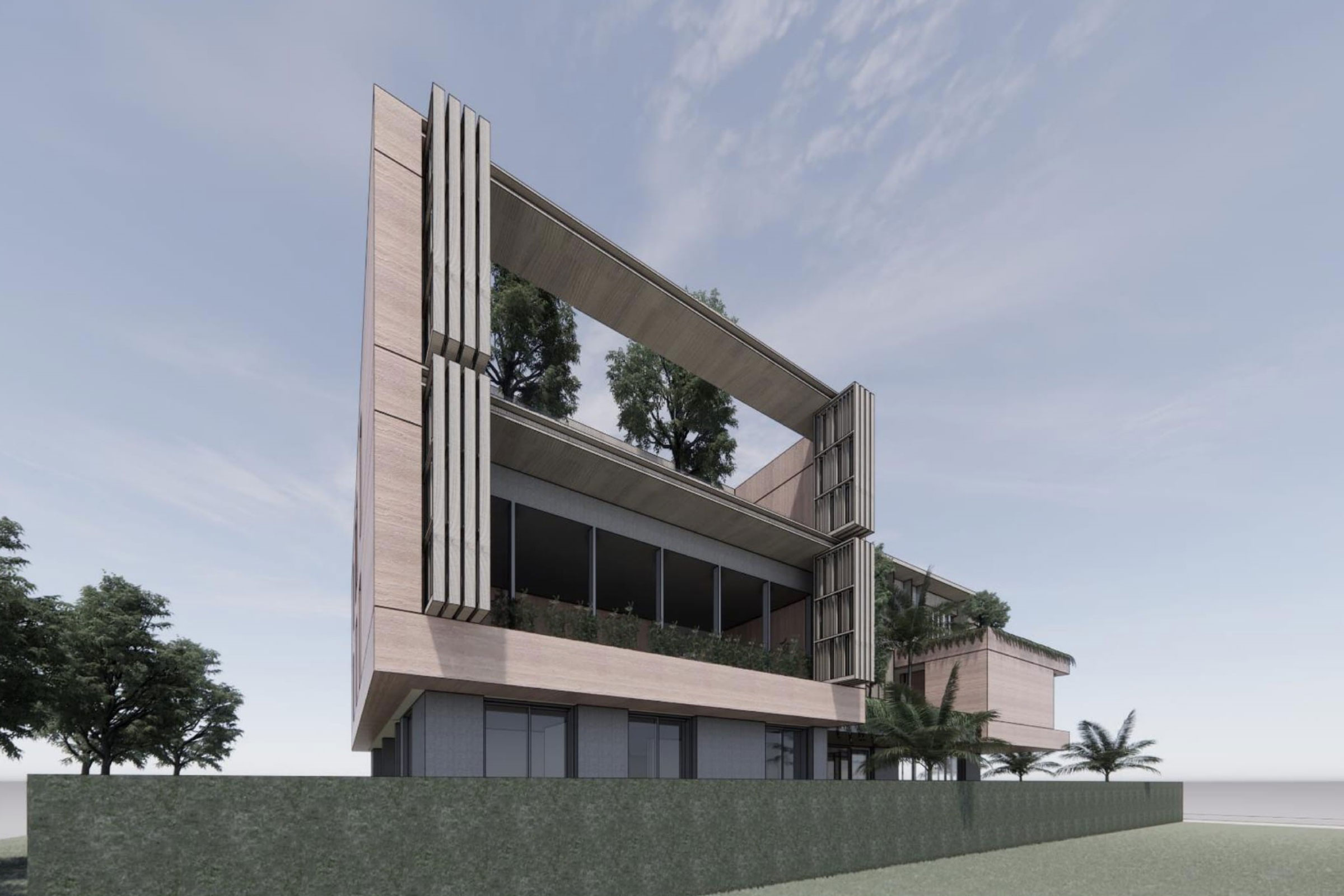
The India House in Bengaluru, India uses biomimetic strategies found in nature to reduce its overall environmental footprint. Rendering courtesy of B+H Architects
Coming from the Greek words bios, meaning life, and mimesis, meaning imitation, biomimicry is an approach to design and engineering that looks to emulate the models, systems, processes, and elements found in nature as a means of solving humanity’s complex problems.
Biomimicry is about valuing nature for what we can learn, not what we can extract, harvest, or domesticate, according to the Biomimicry Institute. As part of that process we learn about ourselves, our connections to one another, and our purpose.
The Biomimicry Institute identifies three needs as essential to the notion of biomimetic design: emulate, ethos, and (re)connect.
- Emulate. The scientific, research-based process of observing, learning from, and replicating biological processes, forms, and ecosystems to develop regenerative—rather than neutral or degenerative—designs.
- Ethos. The philosophy of understanding life’s biological processes to create better designs that both support and create conditions conducive to life.
- (Re)connect. Seeking to dissolve the idea that humans are inherently separate from nature, reminding us that we are part of life’s interconnected systems; encouraging us to observe the natural world so we may form a more holistic ethos to better emulate biological strategies in our designs.
In this manner biomimicry becomes a universally applicable approach to design that can be adapted or scaled across all manner of contexts and industries.
Biomimicry vs Biomorphism vs Bio-utilization
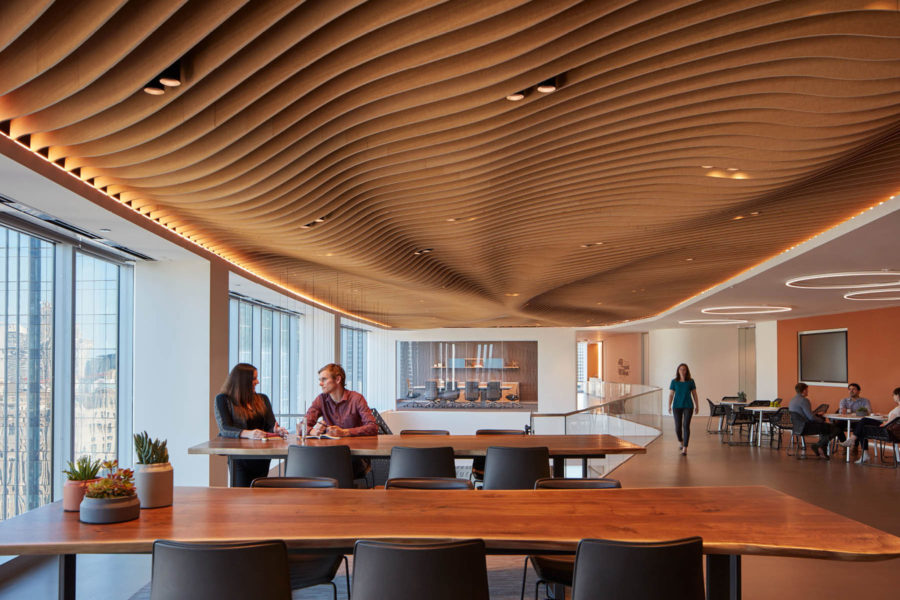
The soft, undulating waves of Atmosphera Analog 3D finished in Arktura’s premium wood texture are seen here at Mead Johnson in Chicago, designed by Partners By Design. Photo by Tom Harris Architectural Photography
Biomimicry is generally recognized as falling under the concept of “bio-inspired design,” an umbrella category for those design and engineering strategies that use biology as a resource for devising innovative solutions. Biomimicry is a type of bio-inspired design, but not all bio-inspired design solutions are considered biomimicry.
In total there are three approaches to bio-inspired design—biomimicry, biomorphism, and bio-utilization; each are influenced by nature’s biological processes in different ways:
- Biomimicry. Refers to designs that utilize the strategies found in nature for a specific function, rather than aesthetics (e.g. Velcro, a widely used hook-and-loop fastener whose form and functionality is based on the burrs of burdock seeds).
- Biomorphism. Refers to those designs that visually resemble or look like biological elements found in nature (e.g. acoustic baffles designed to look like ocean waves).
- Bio-utilization. Refers to the use of biological material and/or living organisms in a design or technology (e.g. installing a vegetated living wall inside a commercial building).
Biomimicry shares similarities with biomorphism and bio-utilization but should not be used interchangeably with the two concepts.
A Brief History of Biomimicry
While the term itself has only been in use for about four decades, biomimicry is not a particularly new or modern concept; many consider famed inventor Leonardo da Vinci to be a practitioner of biomimicry, referencing his conceptual works on flying devices inspired by the anatomy of birds.
Contemporary biomimicry traces its roots to biomimetics—a concept developed in the 1950s and ’60s by American biophysicist and polymath Otto Schmitt, who created the Schmitt trigger by studying the nerves in squid to replicate the biological process of nerve propagation. A similar concept, bionics, was also coined around this time by American medical doctor Jack E. Steele.
Our modern conceptualization of biomimicry was formally defined and expanded upon by Janine M. Benyus in 1997 following the publishing of her revolutionary book, Biomimicry: Innovation Inspired by Nature. In the book Benyus—an American science writer, innovator, and cofounder of the Biomimicry Institute—posited that biomimicry was a “new science that studies nature’s models and then imitates or takes inspiration from these designs and processes to solve human problems.”
In Benyus’ definition of biomimicry nature serves as a model, a measure, and a mentor, one that already has all of the answers needed to design sustainable, regenerative, life-friendly solutions.
Why is Biomimicry Important?
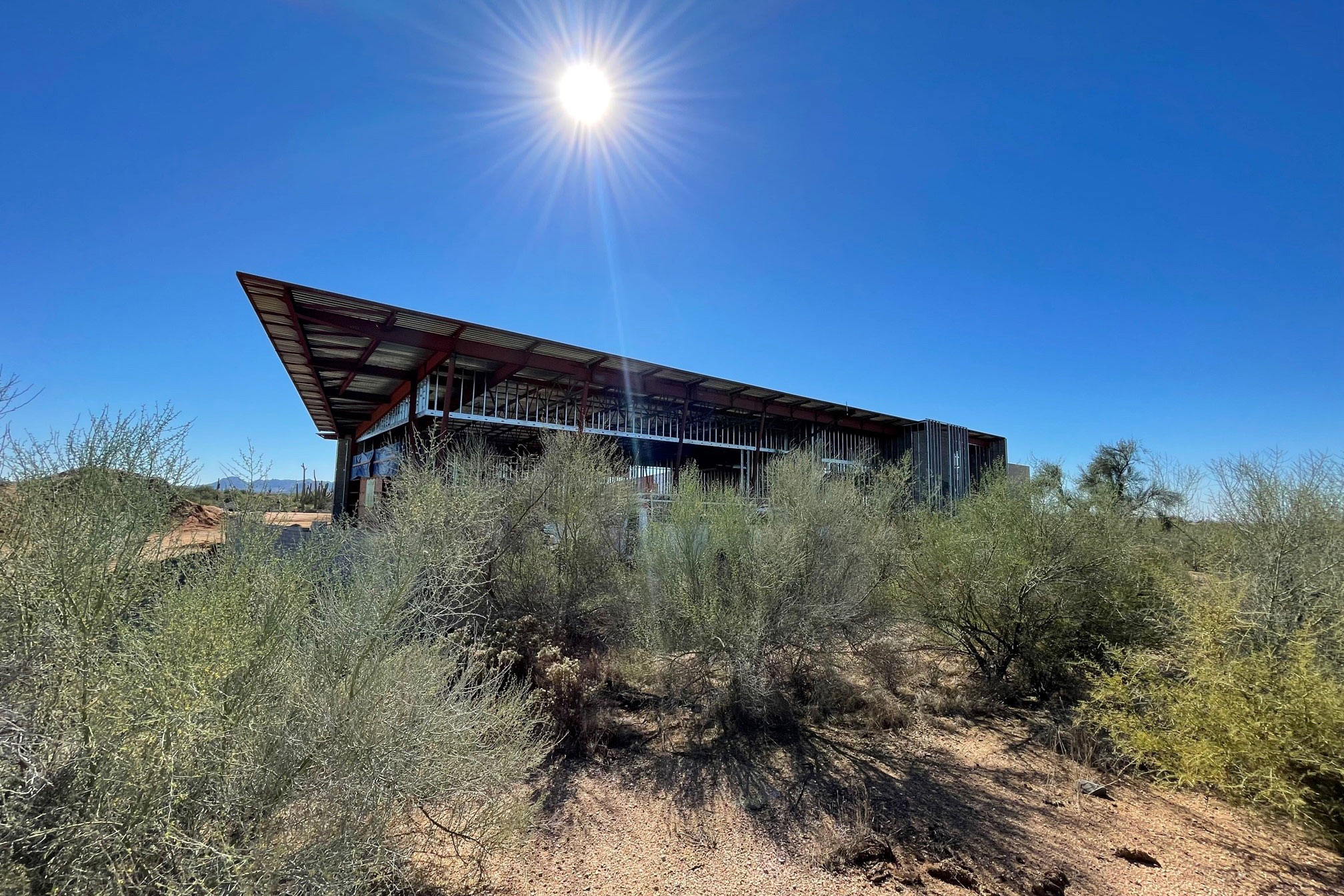
Biomimetic design strategies—like those implemented in the TSG Foundation’s Center for Spiritual Development headquarters—help reduce energy, water, and material waste. Photo courtesy of 180 Degrees Design + Build
Developing and implementing biomimetic solutions is important for a number of reasons:
Encourages Conservation
Biomimicry encourages conservation because it recognizes that ecosystems and their inhabitants possess the knowledge humanity needs to survive the impending climate crisis and build a better future, one in which we as a species may thrive in rather than simply eke out a living.
When people begin to understand that the environment is key to our continued survival, they are more likely to do their part in protecting it for future generations.
Promotes Sustainability & Efficiency
Biological processes that have had millions of years to develop typically represent the most resource- and energy-efficient methods for accomplishing a given task, intrinsically linking biomimicry to the concept of sustainability.
“Nature-inspired designs and the practice of implementing systems analogous to those found in the natural world can also promote sustainability and efficiency through well-conceived materials and processes,” Henry Celli, associate principal and senior architect at CBT, previously wrote for gb&d. “By incorporating these methods—known as biomimicry—into architecture, we can achieve a more intuitive approach to regeneration that requires less mechanical intervention.”
By helping us design solutions that are less energy- and resource- intensive, biomimicry becomes an integral component of climate change mitigation strategies.
Cost-Effectiveness
While it’s true that initial research and development costs for biomimetic designs are often higher than those for conventional designs, biomimicry as a whole is considered to be a cost-effective strategy—especially in architecture—in that it helps save money in the long term by improving efficiency and reducing energy-, water-, and resource-related expenses.
Barriers to Biomimicry
Despite being crucial to stopping climate change and reversing centuries of environmental degradation, biomimetic design often faces challenges that restrict its implementation, with the most prevalent being a simple unwillingness to change.
“Perhaps the biggest underlying barrier to applied biomimicry is that it can be seen as a disruption of the status quo,” Jaime Miller, director of biomimicry at B+H Architects, previously wrote for gb&d. “Over the last several hundred years humans have made incredible progress through reductionist, mechanistic, and robust approaches. Yet the ideas that have led to the success of our species in the past are no longer appropriate drivers for how we are being forced into the future.”
A radical paradigm shift is needed to bring biomimicry into the mainstream, but such an act is much easier said than done.
Tips for the Biomimicry Design Process
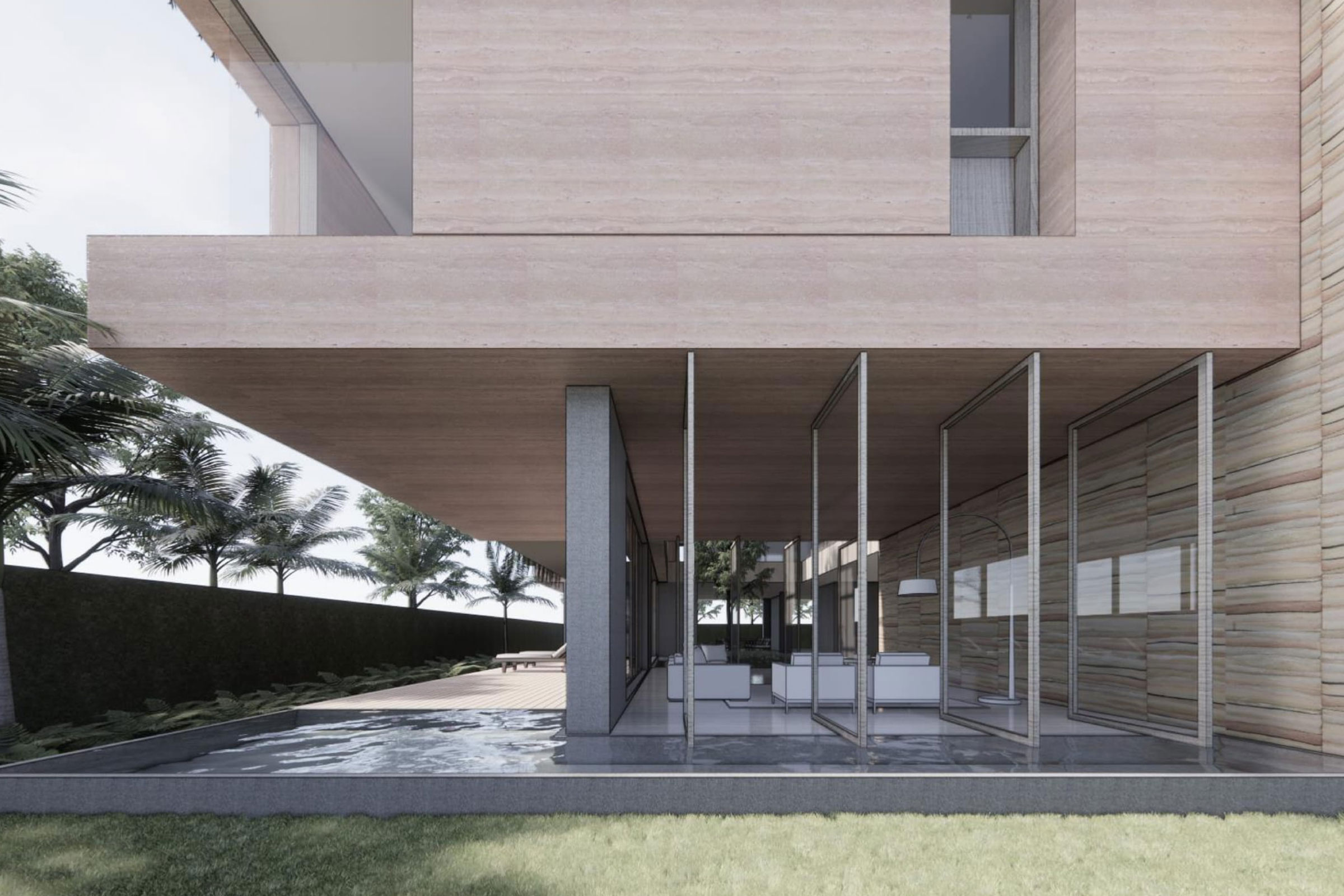
While designing the India House, B+H Architects identified a few key challenges they wanted to address using biomemetic solutions. Rendering courtesy of B+H Architects
The Biomimicry Institute has developed a six-step process called the Biomimicry Design Spiral for identifying and designing biomimetic solutions:
Define
Effective biomimetic design begins with clearly identifying and defining the challenge that needs to be solved, as well as any criteria and constraints that come with it. At this point the goal is not to decide what will be designed but what the design needs to do, for whom, and in what specific context.
This step essentially encompasses the preparatory work that needs to be done before any design work can actually be started.
Biologize
After defining the challenge you’re looking to address, it’s time to reframe that challenge within a biological context—a process colloquially known as biologizing. The goal of this step is to identify one or more “how does nature…?” questions that will help to narrow and streamline future research.
Discover
Arguably the most important step in the process, the discovery stage involves looking for biological processes and natural models that address the same challenge as the one you’ve identified (i.e. finding the answers to those “how does nature…?” questions).
The discovery stage is focused almost exclusively on research and gathering relevant information, either through active observation, reading scientific literature, talking with biologists and other professionals, or some combination of all three. The Biomimicry Institute has developed an online tool, Ask Nature, that can help kickstart the research process by making it easy to find information on various natural models and their functions.
Abstract
Now that you’ve done your research and identified several natural strategies that perform the function you’re seeking to emulate, you’ll need to do the abstract work of translating those fundamentally biological strategies into design strategies—that is, you’ll need to rewrite the strategy without using biological terms. Doing so helps facilitate cross-disciplinary collaboration by removing potentially unfamiliar biological terms and jargon.
This step is often considered to be the most difficult in the Biomimicry Design Spiral. It can be extremely beneficial to consult with a biologist throughout this stage to ensure you have a proper understanding of the biology involved and that the design strategy remains faithful to those biological concepts.
Emulate
After collecting a handful of potentially promising biological processes and mining them for useful design strategies, it’s time to get creative and start thinking up ways to actually emulate those strategies for life-friendly solutions.
This step involves using everything you’ve learned thus far to identify patterns between strategies, explore ideas, and develop design concepts modeled off of nature’s own blueprints.
Evaluate
The final step in the Biomimicry Design Spiral is all about assessing and evaluating the design concepts created during the previous step, specifically for how feasible they are and how well they address your initial design challenge in a life-friendly way.
It is also during this stage that models can be built, technologies tested, and prototypes presented.
Examples of Biomimicry in the Built Environment
One of the most promising applications for biomimicry is in the AEC sector, where the emulation of natural processes can help to drastically reduce energy consumption, waste production, and the overall impact buildings have on their surroundings.
TSG Foundation Center for Spiritual Development Headquarters, Scottsdale, AZ
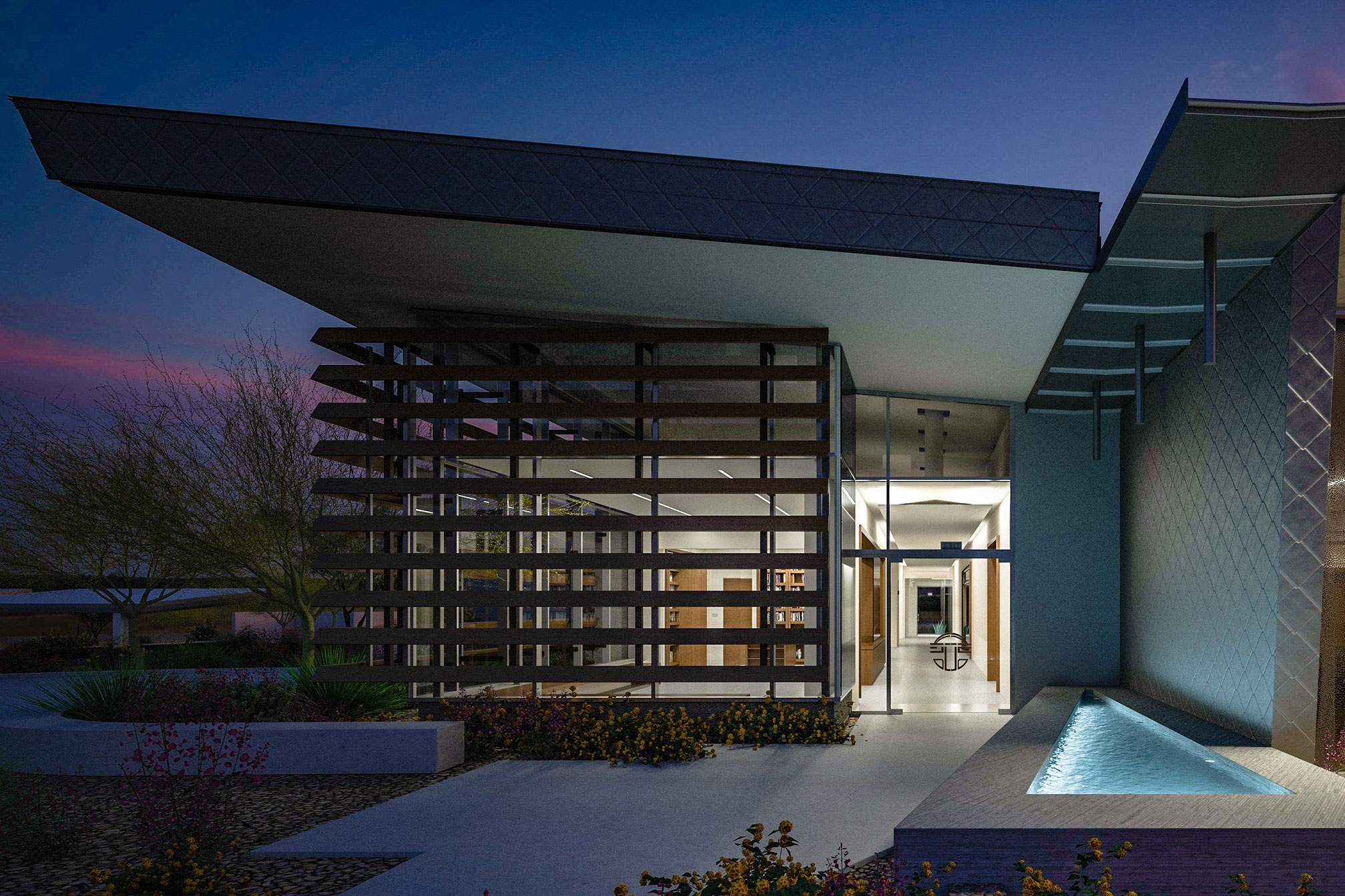
Nearly half of the TSG Foundation’s Center for Spiritual Development headquarters’ masonry exterior utilizes biomimetic strategies design to emulate the form and function of the saguaro cactus. Rendering courtesy of Orcutt | Winslow
TSG Foundation’s Center for Spiritual Development headquarters in Arizona’s Sonoran Desert is a prime example of how biomimicry may be applied in the architectural sense. Designed by Orcutt | Winslow and built by 180 Degrees Design + Build, the building’s form is largely inspired by the biological processes of desert cacti.
Roughly half of the building’s masonry exterior utilizes the form and function of the saguaro cactus, particularly as it relates to the cactus’ ribs. “The naturally occurring form of the saguaro cactus’ ribs are known to function as a cooling mechanism that creates pockets of cooler, shaded air,” Ashley Mulhall, senior associate with Orcutt | Winslow, wrote in a previous gb&d article. “This form of the building’s west facing masonry exterior will aid in cooling the building with no use of additional energy, contributing to one of the project’s passive energy strategies.”
This innovative use of biomimicry along with the project’s other passive and active energy- saving strategies, has put the center on track for Net Zero Energy and Petal certification through the Living Building Challenge.
India House, Bengaluru, India
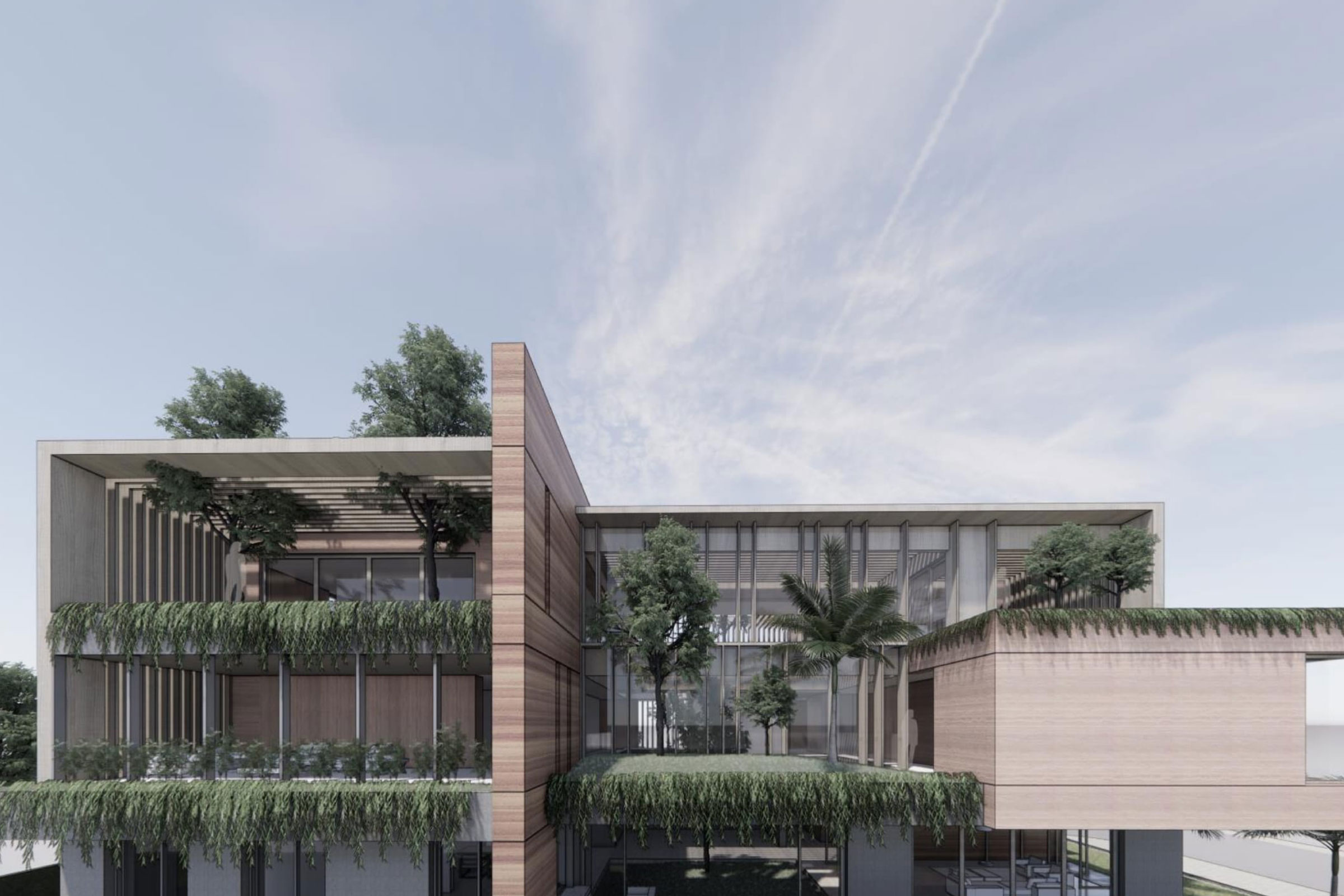
One of B+H Architects’ most comprehensive projects is a biomimetic house design in Bengaluru, India. Rendering courtesy of B+H Architects
Another example of biomimetics in architecture is B+H Architects’ in-progress India House, a single-family residential project that aims to address several base issues. “We stripped the design challenge down to a few key things we wanted the design to do: notably, breathe and self-cool, collect water for periods of drought, and be a contribution to the place,” writes Miller.
To solve the ventilation problem, B+H Architects referenced termite mounds, incredibly efficient structures whose unique design facilitates convection by allowing hot air to escape from the chimney while cooler air is pulled in through moist foraging tunnels. Using these principles the team designed a stack ventilation system to passively regulate interior temperatures and circulate air.
The barrel cactus and baobab tree—two plants incredibly well-suited to storing water for long periods of time—inspired the design of the home’s extensive interconnected rain harvesting system, capable of sustaining the family’s needs for 100 days of potential drought.
To reduce the home’s cooling load, B+H Architects looked to elephants, whose wrinkled, highly-permeable skin allows them to stay cool by trapping moisture for long periods of time. “We abstracted the basic principles of capturing moisture in the cracks and found that a rock wall that harnesses the water from the rain harvesting system would perfectly mimic this idea,” writes Miller. “In doing so we made a very simple cooling technology that was inspired by nature and was also incredibly inexpensive.”

